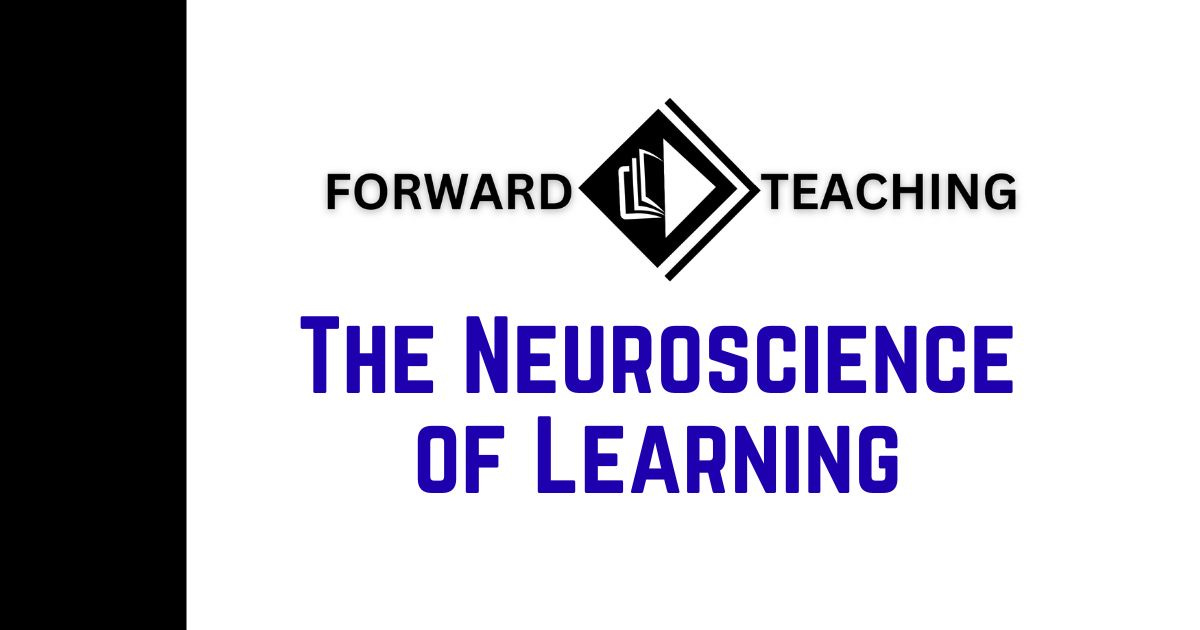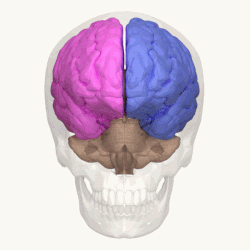The Neuroscience of Learning: 8 key elements that can guide Teaching
Understanding how we learn matters in teaching!
Objectives
By the end of this article, you will be able to:
Understand the biological process of learning and its key elements.
Appreciate the factors that influence learning and their relation to teaching.
The Biological Foundations of Learning
As academics, a big part of what we do is teaching. But teaching is not about monologuing in a lecture theatre. Teaching is all about learning. Without learning, teaching is just transmitting vocal and visual information to a person.
Learning itself is also not about receiving information, remembering it or reproducing it. It’s a much deeper biological operation. It’s a complex neurological process employed by our brain to retain, recall, perceive, post-process, and apply pieces of information in an efficient manner, in order to increase our chances of survival. This makes learning a vital process for life itself. And since teaching is fundamentally all about learning, its safe to conclude that the quality of teaching we receive determines and defines the quality of our decisions in life.
If you think about it, teaching is one of the most precious and important aspects of human life.
What Is Learning?
We can define learning by the effect it has on our body. Learning is a process that physically transforms and remodels the brain, as it rewires neural circuits, strengthens synaptic connections and encodes experiences into long-lasting memory traces. At the heart of this process is neuroplasticity -the brain's ability to change its own structure and function in response to new experiences, new demands for survival and learning. Neuroplasticity happens when the brain forms new connections, new neural pathways, by strengthening or weakening existing ones. When we learn something new (and especially when we attach a level of importance to this new knowledge), then neuroplasticity happens. Our brain physically remodels! This dynamic process underpins the brain's capacity to learn and retain new information while tailoring it to individual experiences and contexts. So, learning is not the passive process through which we retain or reproduce information (output) that we were previously given (input). Its an energetic, vigorous and productive biological process that changes our brain’s structure!
The 8 key elements in the Neuroscience of Learning
1. Fast Thinking vs. Slow Thinking
The brain naturally uses fast thinking as a default, low-effort mode, to quickly recognize familiar context and environmental cues (like size, shape, color, smell, topology etc.). On the other hand, slow thinking requires deliberate effort to solve complex problems, process unfamiliar images or understand new concepts. For example, take the above image with the rotating head. Your brain used fast processing to quickly match the input against familiar past images and since the input passed the “familiarity test” (its a recognizable visual with a human head and a coloured brain) your brain stopped thinking much about it. You continued reading.. On the other hand, if you read this equation now (1242 x 674 = ?) your brain understands that the input does not pass the familiarity test and therefore it requires a slow thinking (high energy) process to respond (solve the equation). However, even now as you read this sentence, your brain still didn’t bother to solve the equation, unless you pressure it to do so.. So, how can you help your brain do that? You need to provide an incentive, attach a meaning to the effort. Otherwise your brain is reluctant to even try to solve the equation.. For example, have you tried to solve it yet? Of course not.. :)
Learning a new and challenging material requires engaging the “slow thinking” process in our brain, which is energy-intensive. It requires effort and incentive to complete. As educators, we have to find this incentive and motivate our students to activate their high-energy brain mode in order to learn a complex concept. If we don’t do that, students don’t engage and therefore they won’t learn. How can we do support learning in energy-demanding needs? With a number of ways: triggering curiosity, providing relevance, assigning a meaningful challenge, giving it a higher importance, or correlating its solution with survival (i.e. passing an exam), are a few of the ways we can employ to ensure deeper engagement and understanding.
2. Processing vs. Interpretation
The brain constantly processes inputs and assigns meaning based on past experiences. Take for example the photo below, with information that makes your brain process contradicting input (a familiar Coca-Cola bottle shape/colour, but in a strange, unfamiliar, size..). The brain processes the input it receives and tries to interpret this information in the current context. In this case, your brain might struggle a bit since the process and the interpretation are contradicting each other. When the brain realizes the existence of the paint box at the bottom-right corner, it provides a whole other interpretation to the input (i.e. this is a street-painting, with the guy smiling painting the bottle on the street itself, succeeding into giving it the right colours, shades, lighting, that fooled the brain for a minute).
This example reflects how learners interpret new information through their existing knowledge and prior experiences. Effective teaching should acknowledge and leverage this process by providing clear, relatable examples and by challenging assumptions, in order to deepen understanding and support learning. Encouraging students to critically analyze information fosters deep learning through effective interpretation of received information.
3. The Brain’s Adaptability
Learning thrives on the brain’s remarkable adaptability. Consider the following image.
Despite the scrambled letters in some words (“ALIBTY”, “APDAT”), your brain most likely can still read all the words with ease and read the sentence as it should appear “Intelligence is the ability to adapt to change”. Our brain process all the letters of a word simultaneously and uses the letters as context for each other. This is why we also can read words that have NUMB3RS 1NST3AD 0F L3773RS. The numbers' similar appearance to letters, as well as the overall context, overpowers their individual status as numbers. Our ability to extract meaning from words jumbled in the middle, is related to our ability to infer context in what we read. According to Marta Kutas at the Center for Research in Language at the University of California, context allows us to activate areas of our brain that correspond to what we expect, rather than to what it is actually written.
This phenomenon showcases how the brain uses pattern recognition and context-based learning to reconstruct meaning from incomplete or distorted information. By relying on prior knowledge, the brain adapts to make sense of what it perceives. This principle reflects the importance of leveraging the context in terms of students’ prior knowledge when introducing new material. Just as the brain uses familiar patterns to decode scrambled words, learners rely on foundational concepts to process new ideas. Teachers can design lessons that build on these anchors, fostering deeper understanding and adaptability.
4. Emotions: The Learning Amplifier
Emotions are the brain’s way of tagging information as significant and tag a level of meaning. Emotions activate the amygdala, a small structure in the center of our brain that works closely with the hippocampus (another structure that is responsible for memory formation), in order to consolidate emotionally-charged memories more effectively. This is why experiences tied to strong emotions -whether joy, fear, or surprise- tend to stick with us for longer.
This emotional connection is vital in effective teaching. A powerful story, a relatable example, or even humor can make a learning experience more memorable. And since emotions also enhance attention, which in turn strengthens memory and understanding, leveraging these emotional connections with teaching practices can lead in powerful learning efficiency.
5. Repetition and Spacing: Reinforcing the Pathways
Learning is not an one-time neural event. It’s a process of reinforcement. Each time a neural pathway is activated, the neuronal connections become stronger. If the pathway takes a long time to re-activate, the brain will adapt to weaken the connection in order to favor another one that requires more energy resources. This is why we tend to forget information that used to be important to us, but since then we failed to use it often or engage with it in a meaningful way. Memory weakens if not revisited. Repetition leads to re-activation of neural circuits, which in turn leads to consolidation of learning, turning fragile short-term memories into durable long-term ones. Spaced repetition, a technique that revisits information over intervals, aligns perfectly with this biological principle. It optimizes memory retention by reinforcing pathways just as they begin to weaken, ensuring knowledge is embedded over time.
This important principle that is rooted in a core biological process is the basis of learning through repetition. Teachers can use this foundation when building curricula and design course material. Throwing bits of past-learned content in current teaching content, will stimulate the students’ neural circuits that are related to this knowledge and strengthen their connections.
6. Stress and Environment: Context Matters
Stress is a double-edged sword in learning. Moderate stress, often referred to as “productive stress,” can enhance focus and improve cognitive performance. It triggers the release of cortisol, which, at optimal levels, sharpens attention and primes the brain for memory consolidation. For example, the adrenaline rush students feel before a big exam can help them recall material more effectively. However, excessive stress, or “destructive stress,” has the opposite effect. Chronic exposure to stress floods the brain with cortisol at high levels, disrupting the hippocampus (critical for memory and learning) and impairing cognitive functions such as attention, problem-solving, and long-term memory retention. Similarly, when the adrenaline influx is more than enough, students get increased heart rate, sweating, tremor and impaired cognitive function. Managing stress in healthy levels is critical for learning efficiently.
But it’s not just emotional stress that matters. The physical environment plays a role in shaping how effectively we learn. Factors like lighting, noise, temperature, and air quality directly impact the brain’s ability to stay focused and process information. Dim lighting or excessive noise, for instance, can overstimulate or distract the brain, reducing its efficiency. Conversely, an optimally lit, quiet, and comfortable environment promotes sustained attention and productivity.
A supportive, engaging, and inclusive classroom-environment fosters optimal learning conditions. From simple things like, lighting, noise, temperature, to even more complex aspects like class timing, balancing the challenges with encouragement helps students remain motivated without becoming overwhelmed. As educators, we have significant control over these variables. A supportive, engaging, and inclusive classroom environment fosters optimal learning conditions. Simple adjustments like ensuring adequate lighting, minimizing background noise, and maintaining comfortable temperatures can create an environment that supports sustained focus. Class timing also plays a role -students are generally more alert and receptive during mid-morning or early afternoon compared to early mornings or late evenings. By addressing both physical and emotional aspects of the environment, educators can create spaces where students not only feel comfortable but also thrive intellectually. Context matters, and small changes can have a profound impact on learning outcomes.
7. Mirror Neurons: Learning Through Connection
Mirror neurons are specialized brain cells that activate when we perform an action or when we observe someone else performing the same action! For example, when we play the piano, or when we see someone else playing the piano, the same neurons are activated in both cases! Scientists believe that the development of mirror neurons is based on the evolutionary characteristics of the importance of connecting with other people, at an emotional, social and interpersonal level. When you see someone crying, the same neurons that would have been activated if you were crying, are activated now by seeing this other person cry. This allows your brain to experience something close to what that person experiences and therefore to emotionally connect, increasing your chances of successful social networking.
In the context of the biological process of learning, mirror neurons form the foundation for learning through observation and imitation, allowing us to mentally "rehearse" actions by simply watching others. Beyond action, mirror neurons are also key to empathy and emotional connection, as they help us understand and internalize the experiences of others.
In teaching, mirror neurons highlight the importance of modeling behaviors and actions. Demonstrating how to solve a mathematical problem step by step on the board, or perform a laboratory work, or even expressing orally the arguments of a critical appraisal, are all equal powerful teaching tools. As students observe the teacher writing, analyzing, and explaining, their mirror neurons activate as though they are performing that task themselves. This mental rehearsal reinforces their ability to replicate and apply the same process later. By harnessing the power of observation and imitation (which is usually underestimated by teachers), educators can enhance students' learning experiences. Moreover, emotional expressiveness, such as showing enthusiasm for a topic, can engage students’ mirror neurons, fostering deeper emotional and intellectual connections to the material.
8. Perception: The Gateway to Learning
Perception is the first step in the learning process. It’s an umbrella that involves the brain receiving sensory input, analyzing it, and assigning meaning to create a coherent understanding of the input and the world. This multistep process transforms raw information into something students can process and retain. For example, when students hear a lecture or see a diagram, their brains actively filter, analyze, and interpret the sensory data coming from what they hear and what they see, forming the foundation for deeper understanding and memory. More importantly, when the sensory input (visual and auditory) is not optimally aligned, the processing of the input is harder to be achieved efficiently and takes longer to do so. This is why when the content of a power-point slide used in a lecture does not align with the content of the words that describe it, its difficult for students to process the combined input, and therefore the quality of their perception of the content is poor.
How students perceive information directly impacts their ability to learn. Teachers play a crucial role in guiding this process by presenting material clearly and contextually. A well-structured visual aid, aligned with a carefully-framed description or explanation helps students process and analyze information more effectively, allowing for quality perception of the content.
Conclusion: Bridging Neuroscience and Teaching
We need to acknowledge that learning is far more than the passive absorption of information. It’s an active, biological process that transforms the brain at a structural and functional level. From the adaptability of neuroplasticity to the activation of mirror neurons, from the interplay of fast and slow thinking to the emotional amplifiers of memory, the science of learning offers profound insights into how we process, retain, and apply knowledge.
Teaching, therefore, as a process that leads to learning, is not just the act of transferring information. It’s the art of orchestrating this complex biological process. By understanding and leveraging factors like perception, emotional engagement, repetition, and the learning environment, educators can create conditions that align with how the brain naturally learns, ensuring that students engage deeply and meaningfully with the teaching material.
Teaching is a responsibility that guides students' minds through processes that not only shape what they know but also how they think and approach the world around them. As educators, we have the opportunity to harness the principles of neuroscience to inspire curiosity, foster adaptability, and transform learning into a lifelong journey. By embracing this intersection of medical science and education, we can move beyond traditional methods and create learning experiences that are not only efficient but also deeply human -resonating with the core of what makes us learn, grow, and connect.
The brain, with all its complexity, is our greatest asset in teaching and learning. Let’s continue to explore and apply its secrets, shaping the future of education in ways that truly empower every individual to thrive.








